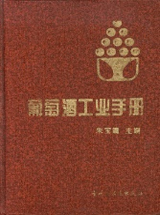
主要责任者: 朱宝镛;戴仁泽,赵光鳌
责任方式: 主编;副主编
出版者: 中国轻工业出版社
出版地: 北京
字数: 630 千字
页码: 1-761
开本: 32
中图分类号: TS262.6-62
装帧: 精
语种:中
定价:48.00
出版时间:1995-05
丛书多卷书否:否
书目简介:本册工具书共收录278条词条。
| 词条 | 葡萄酒工业手册 |
| 类别 | 中文百科知识 |
| 释义 |  主要责任者: 朱宝镛;戴仁泽,赵光鳌 责任方式: 主编;副主编 出版者: 中国轻工业出版社 出版地: 北京 字数: 630 千字 页码: 1-761 开本: 32 中图分类号: TS262.6-62 装帧: 精 语种:中 定价:48.00 出版时间:1995-05 丛书多卷书否:否 书目简介:本册工具书共收录278条词条。 |
| 随便看 |
开放百科全书收录579518条英语、德语、日语等多语种百科知识,基本涵盖了大多数领域的百科知识,是一部内容自由、开放的电子版国际百科全书。